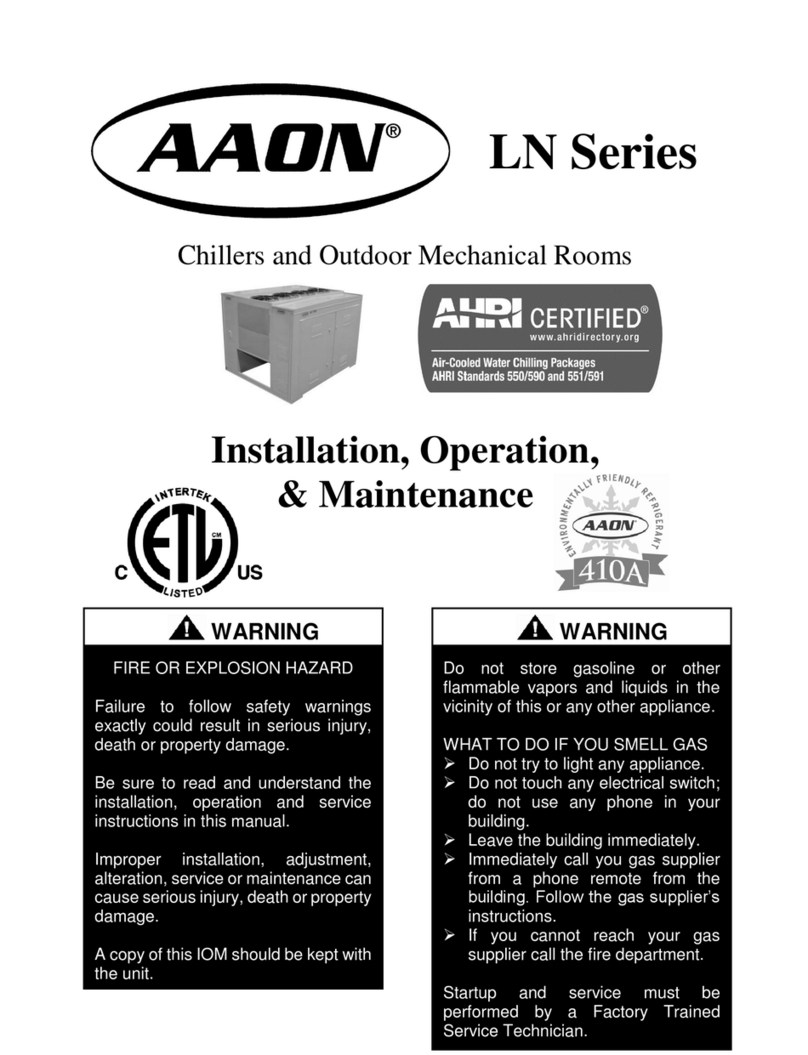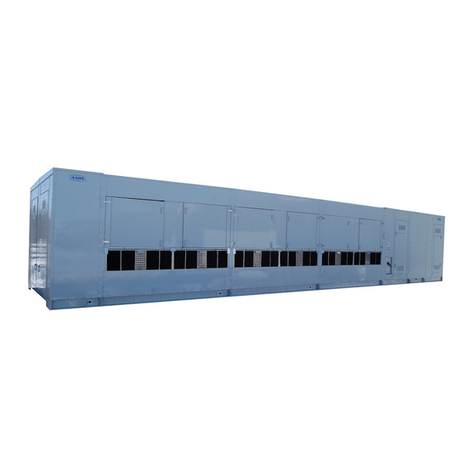2
Table of Contents
AAON LF Series Features and Options Introduction..................................................................... 4
Safety .............................................................................................................................................. 5
LF Series Feature String Nomenclature.......................................................................................... 7
General Description...................................................................................................................... 12
Receiving Unit........................................................................................................................... 12
Chiller........................................................................................................................................ 13
Wiring Diagrams....................................................................................................................... 14
General Maintenance................................................................................................................. 14
Primary Pumping Package ........................................................................................................ 14
Glycol........................................................................................................................................ 15
Compression Tank..................................................................................................................... 15
Pressure Relief Valve................................................................................................................ 15
Manual and Automatic Air Vent............................................................................................... 15
Dual Pumps ............................................................................................................................... 15
Differential Pressure Gauge and Thermometers....................................................................... 16
Pipe Insulation........................................................................................................................... 16
Installation..................................................................................................................................... 16
Forklifting the Unit (4-17, 22 and 24 ton)................................................................................. 16
Lifting the Unit.......................................................................................................................... 17
Locating the Unit....................................................................................................................... 18
Water Connection...................................................................................................................... 18
Mounting Isolation.................................................................................................................... 19
Access Doors............................................................................................................................. 19
Low Ambient Operation............................................................................................................ 19
LAC Valve............................................................................................................................. 20
Condenser Flooding............................................................................................................... 21
Electrical.................................................................................................................................... 21
Startup........................................................................................................................................... 23
Maintenance.................................................................................................................................. 24
General ...................................................................................................................................... 24
Compressors.............................................................................................................................. 24
Refrigerant Filter Driers............................................................................................................ 24
Adjusting Refrigerant Charge ................................................................................................... 24
Lubrication ................................................................................................................................ 26
Service....................................................................................................................................... 27
Warranties ................................................................................................................................. 27
Condenser Tube Inspection....................................................................................................... 27
Pump Operation......................................................................................................................... 27
Access Doors............................................................................................................................. 27
Pump Bearings - Lubrication .................................................................................................... 27
Air Inlet ..................................................................................................................................... 27
Propeller Fans and Motors ........................................................................................................ 28





























